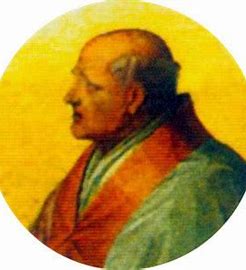
POPES BENEDICT VII and JOHN XIV
Benedetto (Benedict) de Spoleto was born in Rome around 930 AD. Does the name sound familiar? If you have been following this series, it does. The papacy was getting to be quite the family affair. Marozia Crescentii was the female dictator of Rome, after her father, Theophylact, and mother, Theodosia, died. Of course, she had an army behind her. In two marriages, to Alberic of Spoleto and Guy of Tuscany, she had at least three children, Alberic II, David of Spoleto and Bella. A close relative became Pope John XI. Alberic II overthrew his mother and died relatively young, naming his illegitimate son, Octavianus, as his desired successor to the throne of Peter. The young man became Pope John XII. Benedetto was David’s son. He became bishop of Sutri, in central Italy and, then, cardinal deacon in 972.
Being part of the Crescentii family, who supported him, gave Benedetto a peaceful reign, after fixing one problem first. Benedetto’s election in October 974 was influenced by Count Sicco, the envoy of Emperor Otto II. He had been sent to Rome with an army to attempt to save Pope Benedict VI, who was usurped and killed by the anti-pope Boniface VI the previous summer. Although Boniface had escaped to Calabria and thence to Constantinople with the Vatican treasures, he left behind many supporters who wished the new pope ill. Count Sicco, under Otto’s command, solved the problem. So, Benedict tended to turn to Otto II rather than the Crescentii during his reign.
Pope Benedict had two goals in mind during his reign. The first was stopping the practice of simony, the buying of ecclesiastical offices and pardons. The second was overseeing the advance of monascticism.
Several extant letters show Benedict opposed to simony. In March of 981, the Synod of Rome forbade the practice.
In an attempt to help with evangelization, Benedict received a man named James, sent to him from Carthage. After the Moslem conquest of Northern Africa, there were almost no Catholic bishops there. James was ordained and consecrated a bishop and returned to Africa.
In 978, Benedict defined the boundary of the Diocese of Vic, reducing it from an archdiocese. Several years later, he dissolved the bishopric of Mersburg, an outpost among the Slavs, at Otto II’s behest. This was not a good idea as it is seen as a set-back in the conversions of the pagans.
Considering how long his reign was, there is very little found about Benedict’s work.
He died 10 July 983 and was buried in the church of Santa Croce in Gerusalemme.
Once word of Benedict’s death got to the Empress Adelaide (widow of Otto I) and Empress Theophano (wife of Otto II), they lobbied for Majolus of Cluny to be the new pope. He refused. The emperor then lobbied for his own imperial archchancellor, Peter Canepanonva, bishop of Pavia. The bishop was elected and consecrated Pope John XIV in late November or early December, with the emperor present. Why John, rather than his own name? The humble bishop could not imagine himself on the same level at Peter and would not take the name Peter II. Even though that was not a common practice at the time, he chose another name.
On December 7, the young emperor died of malaria, in the arms of his new pope after receiving the rites of the Church. His heir was a three-year old toddler, Otto III. There was no authority figure to protect the pope from what happened next.
The only extant document we have is a letter to Archbishop Alo of Benevento concerning church reform. He did not have time for much more.
The Crescentii family, eager to return to power, immediately sent word to Boniface, who had been biding his time in Constantinople for almost ten years. It took little time to reorganize the past supporters of the anti-pope and get the exile back into Italy. He was in Italy by early spring.
With the help of the Crescentii, John was arrested, beaten and put into Castel Sant’Angelo where he suffered from April to August 20 when he died. Whether it was starvation, poison or misery, we do not know.
Boniface VI ruled for almost a year after that.

Recent Comments